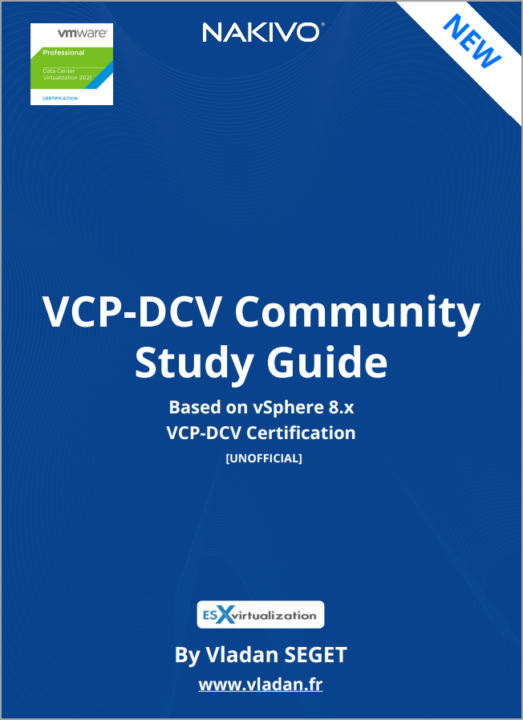VCP-DCV Study Guide based on vSphere 8.x – VCP-DCV 2024 Certification
This page is a new page where you'll find all the necessary information about How to pass the VCP-DCV Exam based on vSphere 8.x. This page will host a VCP8 Study guide which will be released as a FREE PDF.
VMware has released a new certification exam (2V0-21. 23) which it's focusing on the installation, configuration, and management of VMware vSphere 8. You can become certified with a label of VCP-DCV 2023 certified. Get the latest VCP-DCV 2024 preparation guide PDF from VMware Education. Check the Official VMware VCP-DCV 2024 exam guide (blueprint) here.
Exam page here
**************************************************
- The exam duration is 135 minutes
- The number of questions is 70
- The passing Score is 300
- Price = $250.00
**************************************************
I'm using a lab with VMware Workstation software pre-installed.
Persons willing to pass the exam should:
Quote:
The Minimally Qualified Candidate is able to install and configure a VMware vSphere 8. 0 infrastructure, which includes VMware ESXi and VMware vCenter; but occasionally needs to research topics. The candidate understands most of the requirements for managing, operating and maintaining a highly available and scalable virtual infrastructure. The candidate is able to monitor the day-to-day operations of a vSphere infrastructure with minimal assistance. The candidate has a basic understanding of virtual data center, network and storage concepts. The candidate possesses most of the knowledge shown in the exam sections (blueprint).
As with the previous blueprint for vSphere 7.x there is 7 sections, however more chapters (144 chapters in vSphere 8.x compared to 80 chapters in vSphere 7.x based exam)… so more learning, and more knowledge to master….
Remember, the exam based on vSphere 7.x will be retired the 31. Jan 2024 only so still plenty of time to pass your VCP-DCV 2023 via the v7 based exam. Check the Free study Guide PDF page there.
******************************************************************************
Click on the image below to get your VCP-DCV on vSphere 8 FREE Study Guide at our partner Nakivo.
******************************************************************************
Sections included in The VCP Professional VMware vSphere 8.x Exam (2V0-21. 23)
FAQ:
Data Center Virtualization solutions are frequently updated. Having a year as its certification version allows VMware to better maintain the exam and training content, and more importantly, provides certification candidates to communicate how current their skills are in relation to other certifications.
I have attended the latest course (V7) but taken older version VCP-DCV Exam (2V0-621/2V0-622)
If you have taken one of the qualifying V7 courses and passed the older 2V0-621 or 2V0-622 exam you will be required to pass the latest Professional VMware vSphere 7.x (2V0-21.20) exam to earn the VCP-DCV 2023 certification you are pursuing.
Check the official VMware VCP-DCV 2023 exam guide (blueprint) here.
- VMware VCP7-DCV Exam page here.
- VCP6.7-DCV Study Guide – GOOD Read value with How-To's




